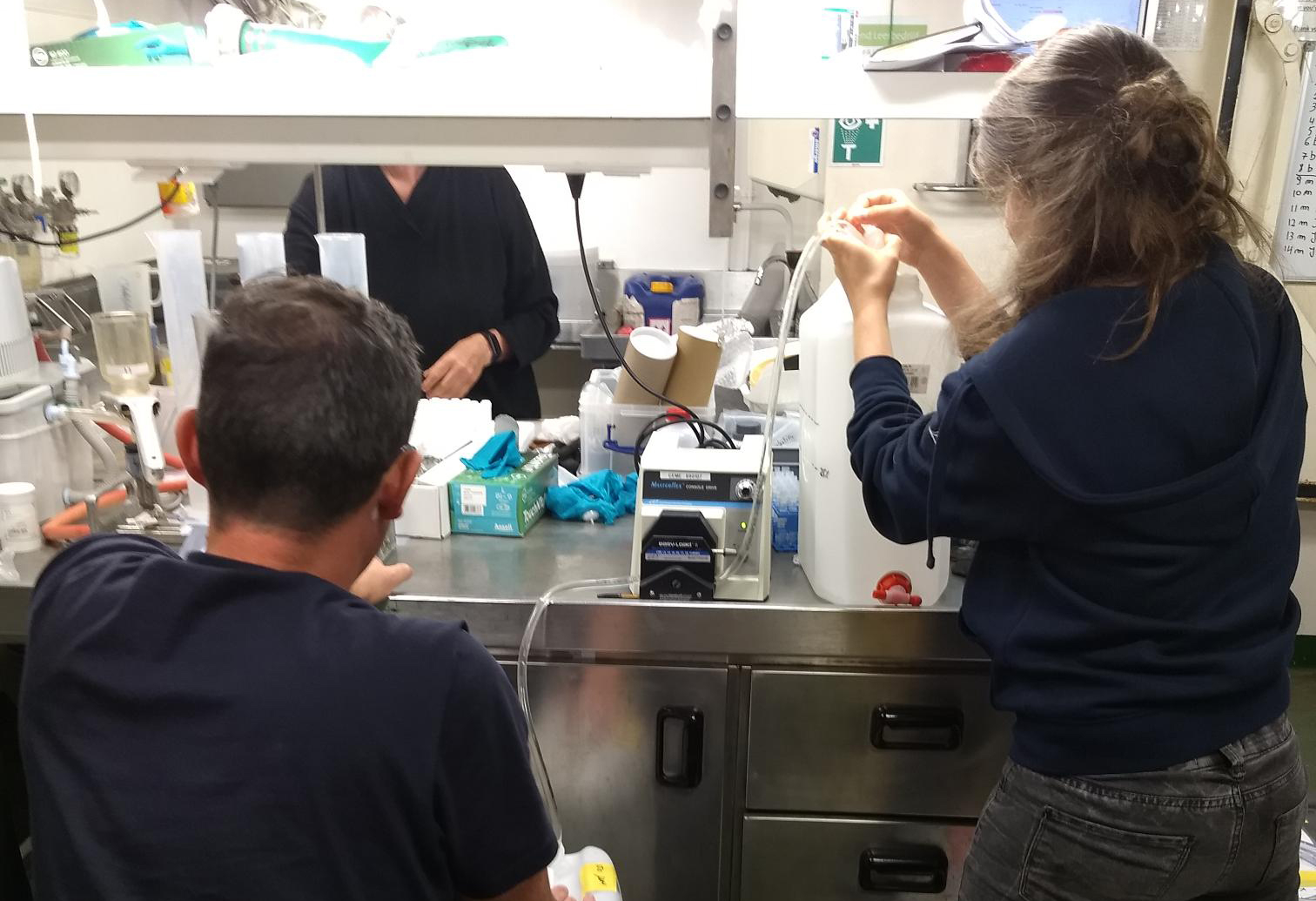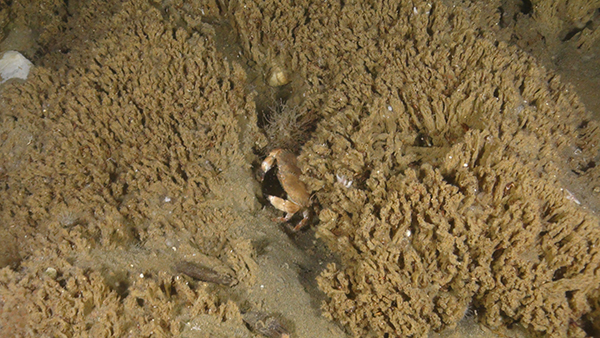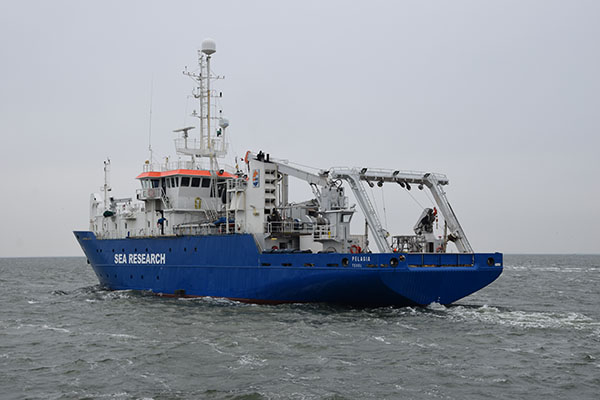NIOZ North Sea expeditions 2019: Three Pelagia cruises to study the carrying capacity of the North Sea
The aim is to strengthen our baseline knowledge on the functioning of the North Sea ecosystem and to understand how the system can respond on the planned transitions towards more food and energy from the sea. We want to assess how strong the carrying capacity of the sea is when changes due to windmills or the culture of seaweeds will occur.
To this end, during the expeditions a wide variety of studies will be performed ranging from the biology of bacteria and plankton in the water, through the sessile animals on the seafloor, to the behaviour of birds at full sea.
These cruises are a follow-up of the discussions held during the Noordzeedagen 2018, held at Texel, and also match with topics mentioned in the North Sea 2030 Programme of the ministries.
Therefore, several colleagues outside the NIOZ, as from Rijkswaterstaat, University of Utrecht, University of Groningen, and even from abroad, as the Alfred Wegener Institute in Germany, will enthousiastically participate. A few places are still open and available for those who can contribute to the central scientific questions of NIOZ-NSRC. In case of interest please contact the NIOZ-NSRC coordinator Herman Hummel.
Cruise information
September | Leg 1 | Sept 4 -12 2019 | Expedition led by Karline Soetaert
On Wednesday 4 September around noon we set out on another leg for the North Sea Monitoring (NSM) program. The first station was at the Friesche Front. The weather was bad though, with waves 5-6 m high. During the late evening we reached the station and stayed there during the night. The large waves made sleeping rough for a lot of us. Despite the stormy conditions we managed to get two CTD casts in the next day which showed a perfectly mixed water column, no surprise there!, but the water was not as turbid as expected. Boxcoring, multicoring and zooplankton net tows were postponed till the next day as the conditions did not allow to work safely. Only the automated measurements of phytoplankton photosynthesis worked perfectly. All these measurements should give us insight into the functioning of the lower part of the foodweb.
Friday morning conditions were calmer and we managed to get a full program done in the morning. The zooplankton sampling was finished just before the wind and the waves picked up again. Boxcores were put in containers so that the nutrient release (or uptake) from bottom could be measured and oxygen sensors measured the “benthic metabolism”. After filtering 100L water (!) we could start the incubations late evening to measure the grazing rate of the micro- (ciliates, flagellates etc) and meso-zooplankton (copepods, larve of shellfish etc). So despite the difficult conditions we got a good day of work in. Fortunately, in the evening the weather improved and the next morning on Saturday the conditions were nice and we good prepare ourselves for a second day of sampling at a station on the "Oyster Grounds" approximately 135 km north north east of Frisian Island Terschelling.
By Jacco Kromkamp

May | Leg 2 | May 18-23 2019 | Expedition led by Jip Vrooman
Stichting De Noordzee (The North Sea Foundation), DISCLOSE and NIOZ are returning to the ross worm reefs.
On Saturday 18 May the Pelagia will be leaving for De Bruine Bank, with Stichting De Noordzee and researchers of DISCLOSE on board. De Bruine Bank is located in the North Sea, exactly between the Netherlands and England, near Amsterdam. It is an area with valuable nature, but is not yet protected.
Research into special ross worm reefs
Two years ago we discovered ross worm reefs (Sabellaria spinulosa) on De Bruine Bank: these are reefs built by millions of small worms, each building its own tub of sand. Together these tubes form a reef that enriches the North Sea nature. A special discovery, because it was thought that such reefs no longer existed in the Dutch North Sea. Now we are going back to further investigate these sandpit worm reefs. What is the exact location and size of the reefs? How are the reefs structured? And what influence do they have on biodiversity? We investigate this by filming and scanning the reefs. In addition, we also take a small number of samples. This way we can show even better how special the reefs are and why it is important to protect them. Read more about this research on the blog page.
Read more about the reefs on the Bruine Bank.

May | Leg 1 | May 8-18 2019 | Expedition led by Jacco Kromkamp
The first cruise left Texel on May 8th, and is heading for the Doggersbank, Fladen and eastern British coastline.
In those areas the researchers of NIOZ, Utrecht University, Rijkswaterstaat (RWS), Wageningen Marine research (WMR), and Alfred Wegener Institute (AWI) will give special attention to the primary production by phytoplankton, the distribution and biomass of zooplankton.
Kees Camphuysen (NIOZ) and Mardik Leopold (WMR) are conducting a first survey on the impact of upcoming changes in marine fisheries and global warming on the well-being of seabirds, seals whales and dolphins in this area. Read more about this research on the blog page.
